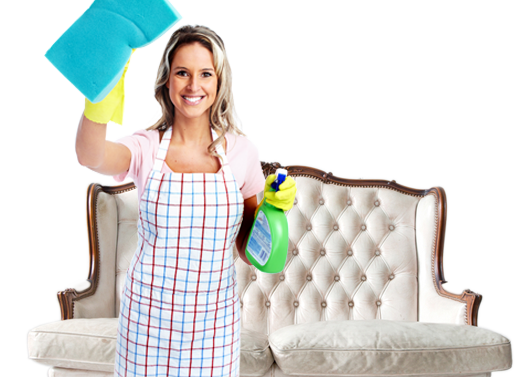Preventative Steps to Ensure a Mold-Free Bathroom
Posted on 05/10/2025
Preventative Steps to Ensure a Mold-Free Bathroom
A mold-free bathroom is not just desirable for aesthetic reasons, but essential for your family's health and the structural integrity of your home. Mold thrives in bathrooms due to their persistent moisture and warm environments, making them prime targets for mold infestations. By taking preventative measures, you can significantly reduce the risk and enjoy a hygienic, fresh-smelling space every day. In this comprehensive guide, you'll discover practical, proven steps to prevent bathroom mold, keep your family safe, and maintain your home's value.

Why Mold Prevention in Bathrooms Matters
Mold spores are everywhere, but they require certain conditions to grow: moisture, warmth, and organic matter. Bathrooms routinely collect water vapor from showers and sinks, creating an ideal setting for mold colonies on tiles, ceilings, grout, caulk, walls, and even stored toiletries.
- Health Concerns: Mold can cause allergies, respiratory issues, skin irritation, and worsen asthma symptoms, especially in children and seniors.
- Structural Damage: Mold can rot wood, degrade grout, and damage drywall, leading to expensive repairs.
- Property Value: Visible mold or persistent smells can decrease your home's resale value.
A little vigilance goes a long way in keeping your bathroom mold-free.
Understand the Causes of Bathroom Mold
Before taking action, it's critical to understand what leads to mold growth in bathrooms:
- Excess Humidity from showers and baths
- Poor Ventilation trapping moisture
- Plumbing Leaks under sinks, tubs, or around toilets
- Improperly Sealed Grout and caulking
- Standing Water on floors and surfaces
- Lack of Regular Cleaning and maintenance
Armed with this knowledge, let's explore proactive steps to block mold before it starts.
Step 1: Prioritize Bathroom Ventilation
Install and Use Exhaust Fans
The single most important preventative step for mold in bathrooms is ensuring excellent ventilation. Proper airflow removes water vapor quickly, depriving mold of the moisture it needs.
- Install a High-Quality Exhaust Fan: Choose a fan rated for your bathroom's square footage and run it during and for at least 30 minutes after showers or baths.
- Keep Windows Open When Possible: If you have bathroom windows, open them during and after hot showers for improved air circulation.
Upgrade to a humidity-sensing vent fan for automated moisture removal.
Encourage Airflow
- Leave the bathroom door open after use to let moist air escape.
- Consider portable dehumidifiers if your bathroom lacks good ventilation or if you live in a humid climate.
Step 2: Manage Moisture Levels Effectively
Fix Leaks Promptly
Dripping taps, leaky pipes, or loose toilet bases are direct invitations for mold issues in your bathroom. Routinely check and repair plumbing as soon as any signs of leaking appear.
- Inspect under the sink and around the toilet for dampness or discoloration.
- Repair cracks in shower stalls, bathtubs, and tile grout immediately.
Wipe Down Wet Surfaces
- After every shower or bath, use a squeegee or towel to quickly dry tiles, glass doors, and fixtures.
- Don't allow standing water to remain on the floor or countertops--wipe it up as soon as possible.
- Hang up bath mats and towels to dry instead of leaving them in a heap, as damp textiles are mold hotspots.
Step 3: Use Mold-Resistant Materials
Opt for Mold-Resistant Paint and Building Materials
If you're remodeling or upgrading, install mold-resistant drywall, backer board, and paints specifically designed for high-humidity areas. These products contain anti-microbial additives that make it harder for mildew to take hold.
- Choose mildew-resistant caulk for sealing tubs, sinks, and showers.
- Select grout with built-in mold inhibitors.
Avoid Carpets and Absorbent Decor
- Stick to tiles, vinyl, or waterproof laminate for flooring.
- Avoid absorbent curtains, rugs, or decorative towels that are not washed and dried frequently.
Step 4: Regularly Clean and Disinfect
Establish a Cleaning Routine
Consistent cleaning is a simple but powerful mold prevention method for bathrooms. Weekly scrubbing removes soap scum and body oils--both food sources for mold.
- Clean the shower, tub, sink, and toilet at least weekly using anti-microbial cleaners or a homemade vinegar and baking soda solution.
- Wipe down tiles and grout to prevent buildup.
- Launder shower curtains, liners, and bathmats regularly; choose machine-washable options.
Spray problem areas (like corners and grout lines) with diluted vinegar or hydrogen peroxide after cleaning for added mold protection.
Attention to Hidden Areas
- Check behind and beneath cabinets, under vanity units, and inside ventilation ducts for early signs of mold.
- Clean and dry under soap dishes, shampoo bottles, and other objects that trap moisture against walls.
Step 5: Seal Grout and Caulk Properly
Apply Sealant to Grout Lines
Grout and caulk joints are some of the most common sites for mold in bathrooms because they're porous and retain moisture.
- Apply a high-quality grout sealer every six to twelve months to prevent water absorption.
- Check for cracks, gaps, or peeling caulk, and repair or replace as soon as needed.
Use Anti-Mold Caulk
- Choose caulk formulated with anti-microbial agents for all wet area joints.
- When replacing old caulk, remove all traces of the previous layer before reapplying for best results.
Step 6: Control Bathroom Humidity
Monitor Humidity Levels
Relative humidity above 60% fosters mold growth. Use a digital hygrometer to monitor your bathroom's levels, especially if you notice condensation on mirrors or windows.
- Aim to keep relative humidity below 50%, especially after bathing.
- If your bathroom is still humid after using an exhaust fan, consider a plug-in dehumidifier as a supplementary solution.
Keep the Room Warm
- Cool bathroom surfaces lead to more condensation.
- Use a space heater in colder months to keep surfaces dry, but never leave heaters unattended.
Step 7: Smart Bathroom Design for Mold Prevention
Optimize Bathroom Layout
- Install shelves and storage that allow airflow behind and under items, avoiding fully enclosed cabinetry directly on the floor or walls.
- Keep the area around the shower and bath clear for easy cleaning and maximum air movement.
Limit Unnecessary Clutter
- Store only essential products in the bathroom to prevent dust and mold from building up in hard-to-reach places.
- Avoid stacking towels or baskets near or under the sink, where leaks may go unnoticed.
Step 8: Address Existing Mold Immediately
Spot-Treat Small Patches
If you find a small patch of mold, act swiftly:
- Wear gloves and a mask for protection.
- Scrub the affected area with a mixture of water and mild detergent; for persistent stains, use vinegar or a diluted bleach solution (never mix bleach and vinegar).
- Dry the area thoroughly after cleaning.
Call Professionals for Extensive Mold
- Large infestations, foul odors, or mold inside walls/flooring require professional remediation.
- Do not attempt to remove black mold or hidden growth without expert assessment.
Simple Habits for a Mold-Free Bathroom
Aside from the bigger steps above, cultivating some daily habits goes a long way:
- Dry the tub, shower walls, and sink after each use using a towel or squeegee.
- Hang all towels and mats to air dry immediately after use.
- Leave the shower curtain or door open to allow for airflow.
- Perform a quick daily scan for leaks, drips, or new stains.
- Change filters and clean exhaust fans every few months to maximize ventilation efficiency.
Common Bathroom Mold Hotspots--Don't Miss These!
*Even with careful cleaning, certain areas are easily overlooked and prone to mold buildup. Make sure to check:*
- Behind toilets and under sinks
- Along window sills and exhaust vents
- Under shampoo/soap trays in the shower
- In grout and caulk along tubs and tiles
- On ceilings above showers or baths
- Behind and beneath garbage cans or laundry baskets

Natural Mold Prevention Solutions
If you prefer less harsh chemicals, consider these natural mold-fighting options:
- Spray surfaces with a solution of white vinegar and water once a week; it acts as a natural fungicide.
- Baking soda is excellent for scrubbing and deodorizing tiles and grout.
- Essential oils like tea tree or eucalyptus, diluted in water, can inhibit mold on bathroom surfaces (test on a small area first).
Conclusion: Your Path to a Mold-Free Bathroom
Preventing mold in your bathroom is an ongoing process that combines smart design, routine maintenance, thoughtful cleaning, and quick responses to problems. By taking proactive steps for controlling moisture, using mold-resistant materials, and maintaining excellent ventilation, you'll stop mold before it starts and preserve a safe, comfortable, and clean environment for your home.
With these practical methods and habits, achieving a mold-free bathroom is entirely within your reach. Stay vigilant, act early, and enjoy the peace of mind that comes with a truly fresh and healthy space!
Frequently Asked Questions (FAQs)
- How often should I clean my bathroom to prevent mold?
At least once a week for thorough cleaning of all surfaces, plus daily moisture management. - Are there any warning signs of mold growth to watch for?
Musty odors, black spots on grout, peeling paint, or persistent dampness are all potential signs. - Is bleach the best cleaner for bathroom mold?
Bleach is effective but can be harsh; vinegar or hydrogen peroxide are safer alternatives for regular maintenance.
Take action today and enjoy a beautifully clean, healthy, and mold-free bathroom for years to come!




